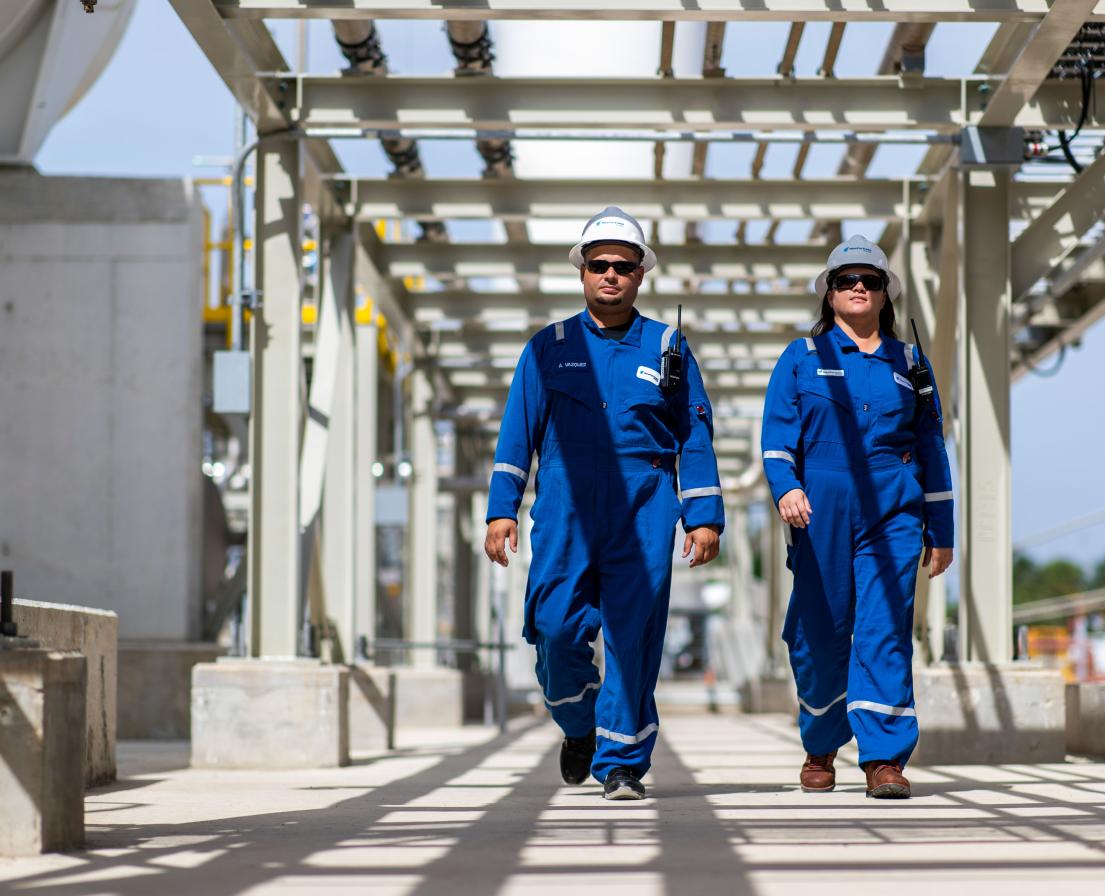Offshore LNG solutions
LNG CASE STUDY
Learn about offshore LNG solutions
Liquefied natural gas (LNG) is a leading energy source worldwide because it’s safe, reliable, and easy to transport. While existing natural gas infrastructure has a solid foundation on land, we’re excited to help lead the development of the previously uncharted waters of offshore LNG solutions. Ready to learn more about this innovative way to power positive energy? Join us and dip your toes into the possibilities of LNG!
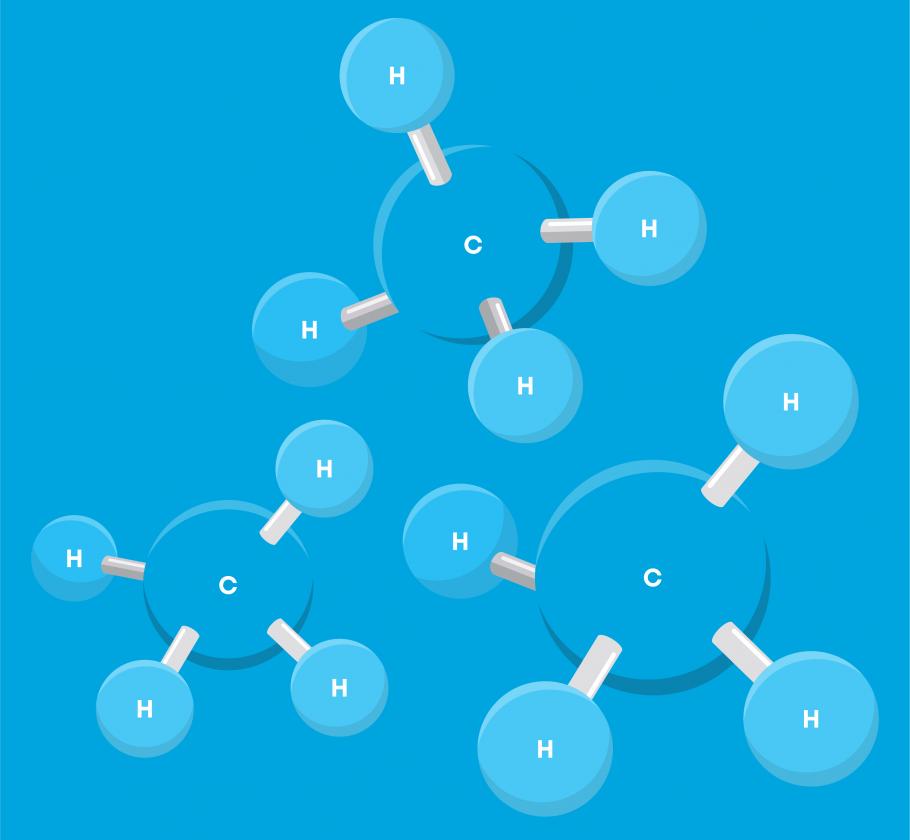
What is natural gas?
Natural gas is another term for methane (CH4), a combination of carbon and hydrogen.(1) Untreated, it may also contain butane, propane, pentane, nitrogen, carbon dioxide, and water vapor.(2)
Natural gas has no color, no odor, and no taste, but a long history.(3) Natural gas starts out as decomposing plant and animal matter buried in sedimentary rock or along the ocean floor.(4) Over millions of years, heat and pressure transform those remains into fossil fuels such as coal, oil, and natural gas.(5)
While some rises above the ground, the rest can only be extracted by drilling or going through oil wells and coal deposits into crevices below Earth’s surface.(6)
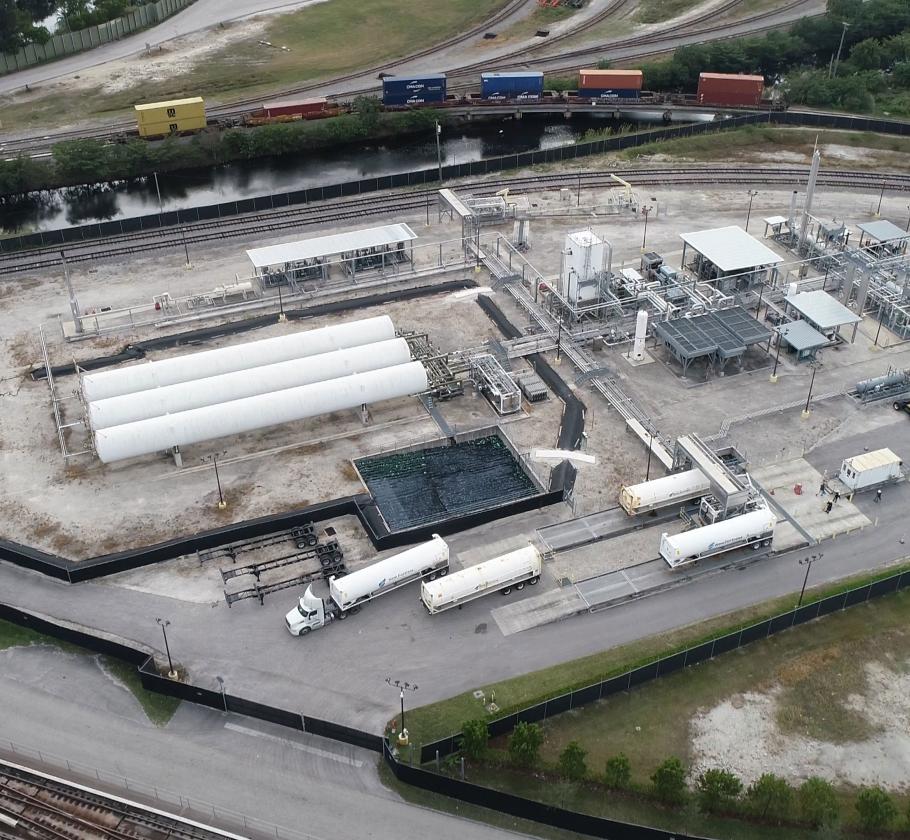
How do you liquefy natural gas?
Once the natural gas has been removed from its underground resting spot, it is transported to processing facilities.(7) That’s where the cool stuff happens – as in cooling the gas(8) to roughly -260° Fahrenheit (-162° Celsius).(9) That process removes impurities and changes the natural gas to its liquid state encompassing just 1/600 of its gaseous volume.(10) Now it’s ready for safe and easy transportation as LNG.(11)
Commissioned in 2015, our liquefier plant in Miami, Florida,(12) is the state’s first privately owned LNG plant – and the first to export LNG from the continental United States to a non-free trade agreement country.(13) It can process 100,000 gallons of natural gas every day for delivery to commercial, industrial, and transportation customers throughout South Florida and the Caribbean.(14)
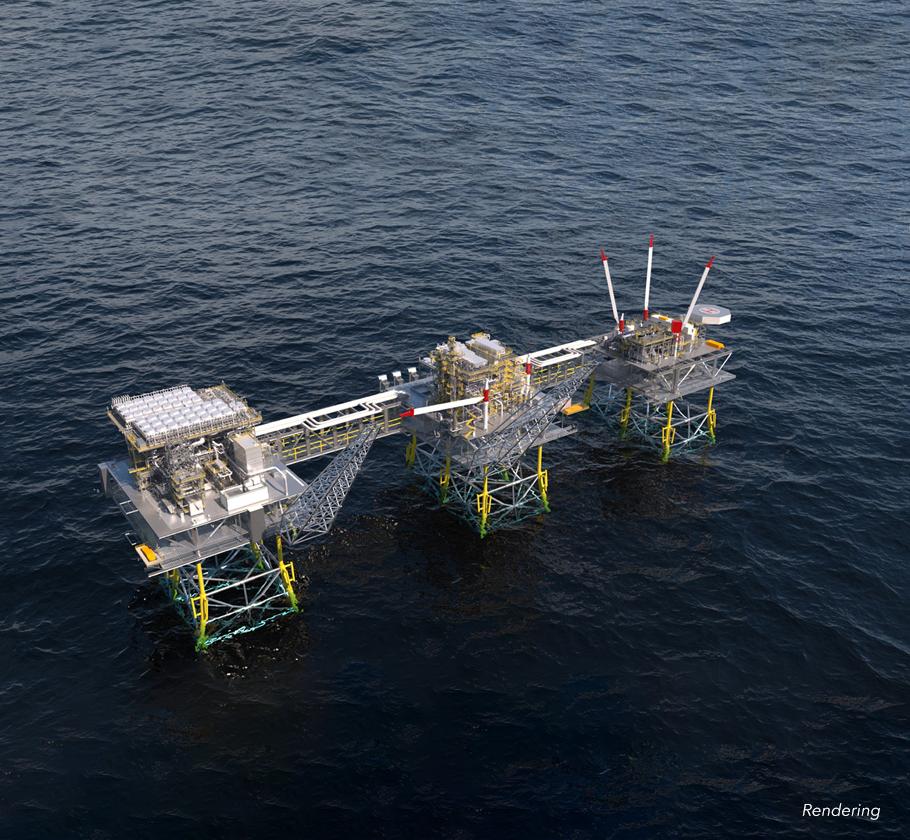
What is offshore liquefaction, and what are examples of offshore LNG solutions?
An exciting development in the liquefying process involves offshore liquefaction through floating liquefied natural gas (FLNG) systems that use natural gas from offshore fields that were previously inaccessible.(15) FLNG simply floats a new place to liquefy natural gas – at sea, rather than on land. Housed on a water-based vessel(16), the FLNG system processes and liquefies natural gas, then moves it to carriers for shipment worldwide.(17)
In 2021, we began developing ways to use FLNG technology, and now, with our modular approach to FLNG, we’re setting sail with our proprietary Fast LNG solution by(18) building the first offshore LNG export facility in the U.S.(19) Our innovative Fast LNG solution is designed to partner FLNG technology with existing jack-up rigs, fixed jackets, and Sevan semi-submersibles rather than ships.(20) It is expected to enable a much lower cost and faster deployment schedule with the ability to deliver roughly 1.4 million tons per annum (MTPA) of LNG per unit.(21)
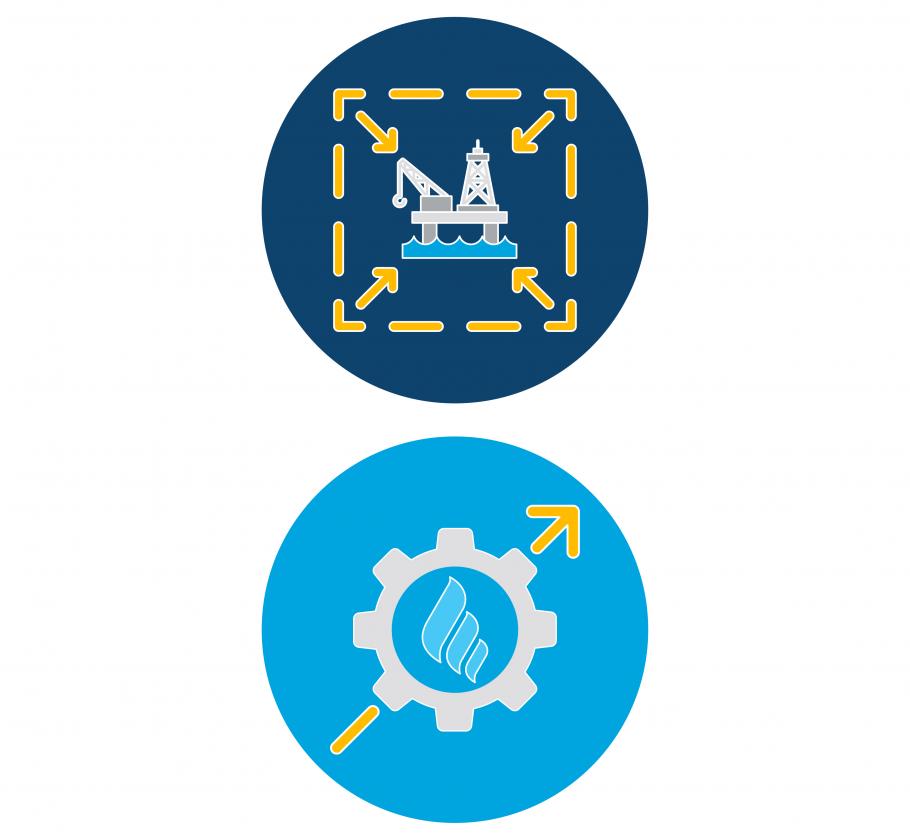
What are the benefits of offshore LNG solutions?
Offshore LNG solutions offer a literal boatload of benefits- here are our top two!
- FLNG technology can accelerate the development of gas resources(22) that might otherwise be too far, too difficult, or too expensive to reach.(23)
- Offshore LNG facilities, with their compact design, can take up a fraction of the space of a typical land-based LNG plant.(24)
Offshore LNG solutions such as our Fast LNG operation are more than a splash in the pond – they’re an innovative breakthrough that can power the world – particularly coastal communities(25) – with the positive energy of liquefied natural gas.
